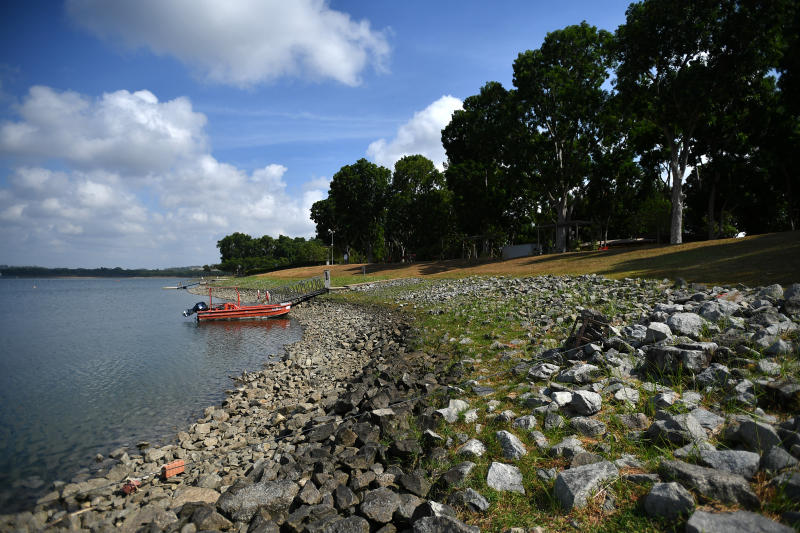Floating solar panel systems at Bedok, Lower Seletar reservoirs operational middle of 2020
Sign up now: Get ST's newsletters delivered to your inbox

Bedok Reservoir, pictured on Aug 23, 2019. Floating solar panel systems will be operational at Bedok and Lower Seletar Reservoirs by the middle of next year.
ST PHOTO: LIM YAOHUI
Follow topic:
SINGAPORE - Floating solar panel systems that harness the sun's energy to generate electricity will be operational at two reservoirs by the middle of next year.
National water agency PUB said in a statement on Wednesday (Oct 30) that it has awarded the tender for building two floating solar photovoltaic (PV) systems, at Bedok and Lower Seletar Reservoirs, to local construction and engineering group BBR Greentech.
The systems at the reservoirs will run at 1.5 megawatt-peak (MWp) each, and the electricity generated by them will directly power Bedok Waterworks and the raw water pumping stations at Bedok and Lower Seletar Reservoirs.
The energy generated by the two systems will be equivalent to that consumed by about 800 four-room Housing Board flats for a year, and will reduce the PUB's carbon emissions by around 1.5 kilotonnes annually - or the equivalent of taking 300 cars off the road.
Together with an existing 0.5 MWp rooftop solar array at Bedok Waterworks, the floating solar systems will produce enough green power to satisfy 30 per cent of the installations' total energy requirements.
In June, PUB said that one of the world's largest single floating solar PV systems will find a home in the waters of Singapore's Tengeh Reservoir by 2021.
The tender for the Tengeh Reservoir system, which will be the nation's first large-scale floating system of solar panels to power water treatment processes, is expected to be awarded by the end of this year.
Covering an area the size of about 45 football pitches, the floating solar farm at Tengeh Reservoir will operate at 50 MWp. It can power the equivalent of up to 13,500 four-room Housing Board flats annually.
BBR Greentech was one of the companies that had participated in the PUB and Economic Development Board floating solar PV test bed on Tengeh Reservoir to study the feasibility of floating solar PV technology here.
As for the floating solar PV systems at Bedok and Lower Seletar reservoirs, PUB said on Wednesday that they will be deployed on the reservoir surface next to Bedok Pump Station and the Lower Seletar Pump Station.
Taking up just 0.5 per cent of Lower Seletar Reservoir and 2 per cent of Bedok Reservoir's surface areas, they will not affect the operational and recreational uses of the reservoirs, PUB said.
"Solar power is a viable source of renewable energy in sunny Singapore," said the agency. "While the majority of solar PV systems are deployed on land or rooftops, water bodies such as reservoirs, with their large surface areas, can also be used to harness solar energy."
The award of the tender for the two systems comes amid a shift towards solar power, a renewable source of energy, as global awareness of how fossil fuels are contributing to climate change is growing.
By 2030, Singapore wants to ramp up its solar capacity by more than seven times from current levels, and increase the current 260 MWp of installed solar capacity to 2 gigawatt-peak.
This is enough to meet the annual power needs of about 350,000 households in Singapore, or about 4 per cent of Singapore's total electricity demand today.
The new 2 GWp target for Singapore was outlined by Minister for Trade and Industry Chan Chun Sing on Tuesday at the opening of the Singapore International Energy Week at the Sands Expo and Convention Centre.

